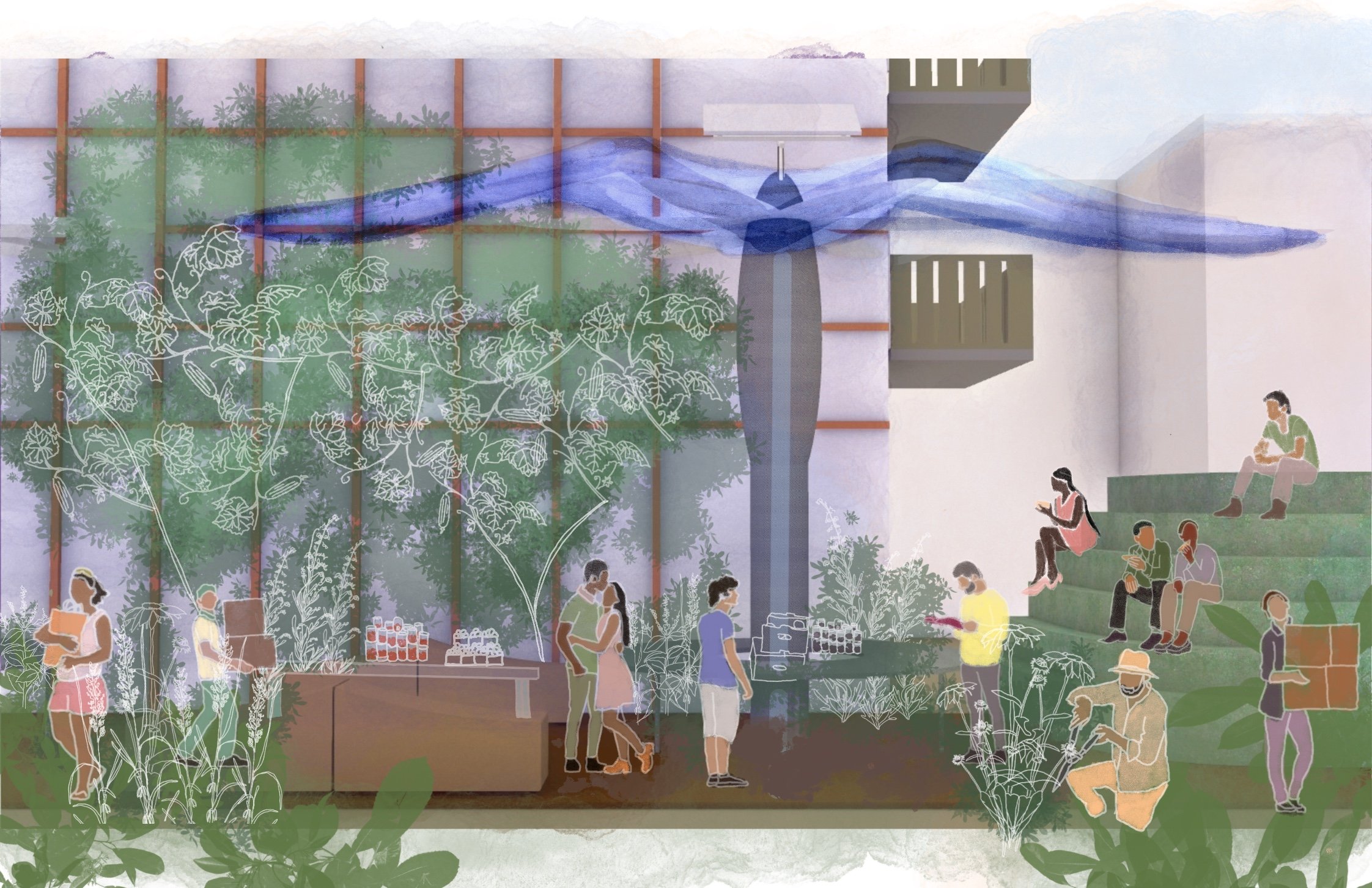Future Spring
Parsons MFA ID Thesis, 2025
A project about collective care, mutual aid and regenerative systems in Bed-Stuy, BK
This project centers residents of Bed-Stuy & Crown Heights, transforming a vacant lot into a dynamic, community-driven space for food production, skill-sharing, and environmental resilience. Grounded in mutual aid, regenerative land practices and Indigenous design principles, integrating community and technology systems like solar, wind, and water-harvesting systems to create an interactive, collectively-sustained ecosystem. By engaging with residents in co-designing & mapping existing care networks, the vacant lot becomes a model for reclaiming urban space through collective stewardship. This work envisions and fosters a future where Bed-Stuy remains a place of belonging, intergenerational care, and shared knowledge.
In what ways can design foster future world-building by integrating Indigenous design and technology to strengthen food sovereignty, skill and resource-sharing, and mutual aid on Lenape lands (BK)?
Timelapse of Site from 1996 - 2018
Context: Defining ‘Food Deserts’
Lack of access to fresh seasonal, local, abundant & nourishing produce.
Case Study: The Art of Mutual Aid
Stakeholders Diagrams, 2025 - 2050
Material Palette, 2025 - 2050
Proposal Timeline
Sections & Systems 2025 - 2050
The design proposals show up in a series of sections over the course of 25 years, showing how the site is being adapted to residents’ needs and how we care for it. The proposal includes:
Outdoor gathering space
Community Apothecary
Community Tool Library
Communal Kitchen & Greenhouse
Micro-farm to Food Forest
Model & Material Explorations
Emphasizing the ethos of this project on regenerative systems, the model was made using foraged and grown ephemeral biomaterials and then composted back.












